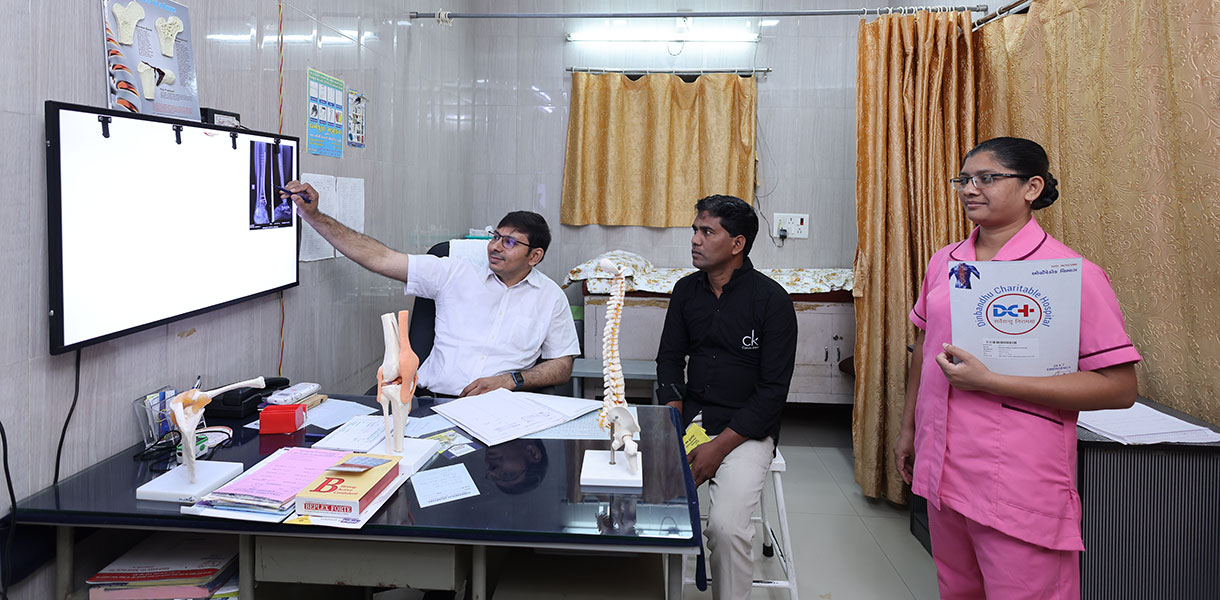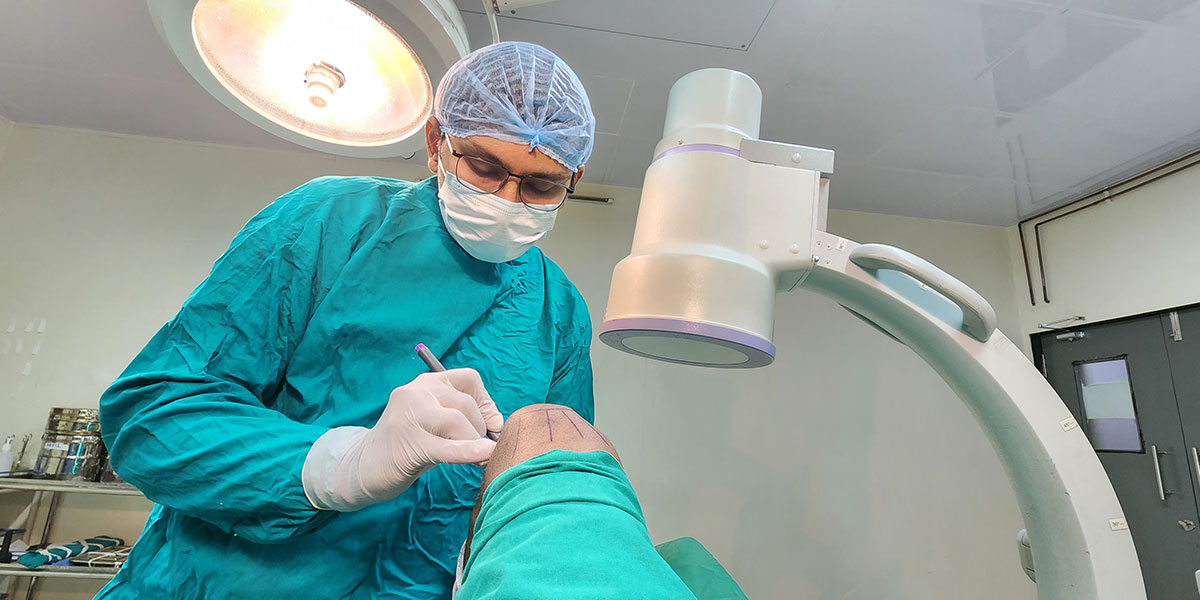
Orthopedic surgery or orthopedics (also spelled orthopaedics) is the branch of surgery concerned with conditions involving the musculoskeletal system. Orthopedic surgeons use both surgical and non-surgical means to treat musculoskeletal trauma, sports injuries, degenerative diseases, infections, tumours, and congenital disorders.
Accidents and injuries are increasing in everyday life by alarming proportions. Road trauma is now designated as a no.1 killer in young patients by WHO. Dinbandhu Hospital is a tertiary referral center for complex trauma services and deals with the management of primary trauma, neglected trauma, complications of primary management of trauma, polytrauma and mass accidents. The Trauma team includes intensivists, orthopedic surgeons, general surgeons, neurosurgeons, and specialized nurses. All members of the Trauma team are trained in Basic Life Support (BLS) and Advanced Trauma Life Support (ATLS) resulting in patients being efficiently triaged and managed in the emergency department.
Joint replacement surgery removes damaged or diseased parts of a joint and replaces them with new, man-made parts. Replacing a joint can reduce pain and help you move and feel better. Hips and knees are replaced most often. Other joints that can be replaced include the shoulders, fingers, ankles, and elbows.
Arthroscopy is key-hole surgery of the joints where a thin (4 mm dia meter) telescope is introduced into the joint through a small cut, and the inside of the joint examined. Once the diagnosis is confirmed, the corrective surgery is done there and then by introducing micro-instruments through another small skin puncture.
It is done with the patient under spinal or general anesthesia. The blood circulation to the leg is blocked with the help of a broad rubber band like thing (tourniquet) on the thigh. The knee is cleaned and draped as would be done for any other operation. A cut is made just below and outside the knee cap. Through this, the arthroscope (a kind of telescope) is introduced, and a small video camera is attached to it. The arthroscope can be moved to different parts of the joint, and all the structures inside the joint are thoroughly examined. The second cut is made on the medial side of the patellar tendon through which other instruments such as probe, cutters etc can be introduced
Chronic diseases are defined broadly as conditions that last 1 year or more and require ongoing medical attention or limit activities of daily living or both. Chronic diseases such as heart disease, cancer, and diabetes are the leading causes of death and disability
Bone disease, any of the diseases or injuries that affect human bones. Diseases and injuries of bones are major causes of abnormalities of the human skeletal system. Although physical injury, causing a fracture, dominates over disease, fracture is but one of several common causes of bone disease.
Your bones help you move, give you shape and support your body. They are living tissues that rebuild constantly throughout your life. During childhood and your teens, your body adds new bone faster than it removes old bone. After about age 20, you can lose bone faster than you make bone. To have strong bones when you are young, and to prevent bone loss when you are older, you need to get enough calcium, vitamin D, and exercise. You should also avoid smoking and drinking too much alcohol.
